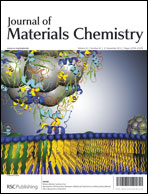Multifunctional, luminescent and magnetic systems were synthesised by a co-precipitation method and broadly investigated. In our studies down- and visible up-conversion of Yb3+ and Tb3+ doped GdPO4 nanocrystals were observed. The synthesised nanomaterials were analysed by X-ray diffraction (XRD) and transmission electron microscopy (TEM). Spectroscopic properties were determined from excitation and emission spectra together with a subsequent analysis. The build-up characteristics of luminescence decays showed the energy transfer processes that occurred. Magnetic measurements were performed by means of vibrating sample magnetometry (VSM). These nanomaterials showed intense green emission under ultraviolet (UV), 272 nm, and near infrared (NIR), 980 nm, laser excitation. The mechanism lying behind the observed spectroscopic properties was proposed. Energy transfer between Gd3+ and Tb3+ ions, as well as cooperative energy transfer from Yb3+ to Tb3+, was found to give a dual-mode luminescence. Also, quenching processes by cross-relaxation and phonon-assisted energy transfer were observed. The presence of different lanthanide ions and the influence of the finite-size effect underlie the complex behaviour observed.

You have access to this article
 Please wait while we load your content...
Something went wrong. Try again?
Please wait while we load your content...
Something went wrong. Try again?


 Please wait while we load your content...
Please wait while we load your content...